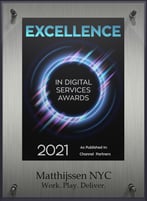What Hacking Techniques are Most Common?
It seems like every week, we hear of another company that has experienced a security breach at the hands of hackers. Corporations have become appealing targets for hackers because of the wide array of sensitive, confidential information that companies now send, receive, and store digitally. Even the most enterprise of companies can have trouble thwarting a security breach. Hackers can be well-resourced, and highly-motivated.
However, being aware of common hacking techniques and staying vigilant to protect your company against them is important. By maintaining a strong foundation of cyber security, you’re more likely to protect your company against the many negative consequences of a security breach.
The most common hacking techniques include:
Malware
Malware is a type of software that attempts to gain access to your computer and network. For example, with the accidental click of a pop-up ad or bad email link, you could allow malware to access your computer, where it can take a variety of harmful actions without your knowledge. The malware may be capturing keystrokes to identify corporate passwords, or it may be sending data back to the hacker’s computer undetected. To minimize the risk of malware, educate your employees about the common ways hackers will trick users into downloading malware, and make sure all computers have updated anti-malware software protection.
Phishing
Phishing is one of the most commonly used types of hacking. With this technique, hackers will send a fake link to a frequently accessed website. For example, an email account or a social media account. When the user enters their login information for the site, the hacker is able to capture that information and gain access to the account, and in some cases, the larger network on which that account belongs.
DOS
A Denial-of-Service attack (DOS) is when a website is bombarded with an unusually heavy amount of traffic (from a hacker) to essentially paralyze the website from functioning. In this paralysis, a hacker’s intent is typically to disrupt service to a company’s users. If you’re a Software-as-a-Service company or have a customer self-service site (like a bank) DOS threats can be costly to both your bottom line and your brand reputation.
Cookie Theft
No, we’re not talking about someone stealing sweet treats. Cookies is a term for the bits of information your web browser collects and saves. You’ve probably seen pop-ups from websites letting you know that they use cookies to track your information. Often this includes credentials, passwords, and other personal data that you use to log in to sites. Cookies aren’t intended to serve a malicious purpose. However, when in the wrong hands, cookies can be used for less noble purposes. With the personal information cookies typically hold, a hacker can act as you and take action on the websites you log in to. To minimize the number of cookies that can be hacked, browsers and caching should be periodically cleared.
Are you and members of your business protected against these common hacking techniques? For more in-depth information about hacking techniques and how to protect your business technology, give us a call at Matthijssen Business Services today!












